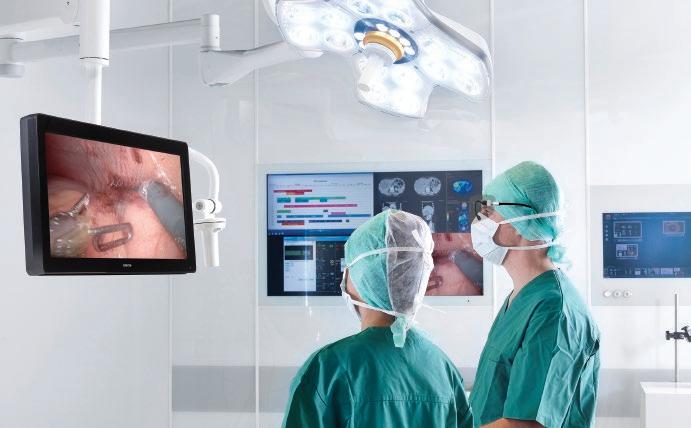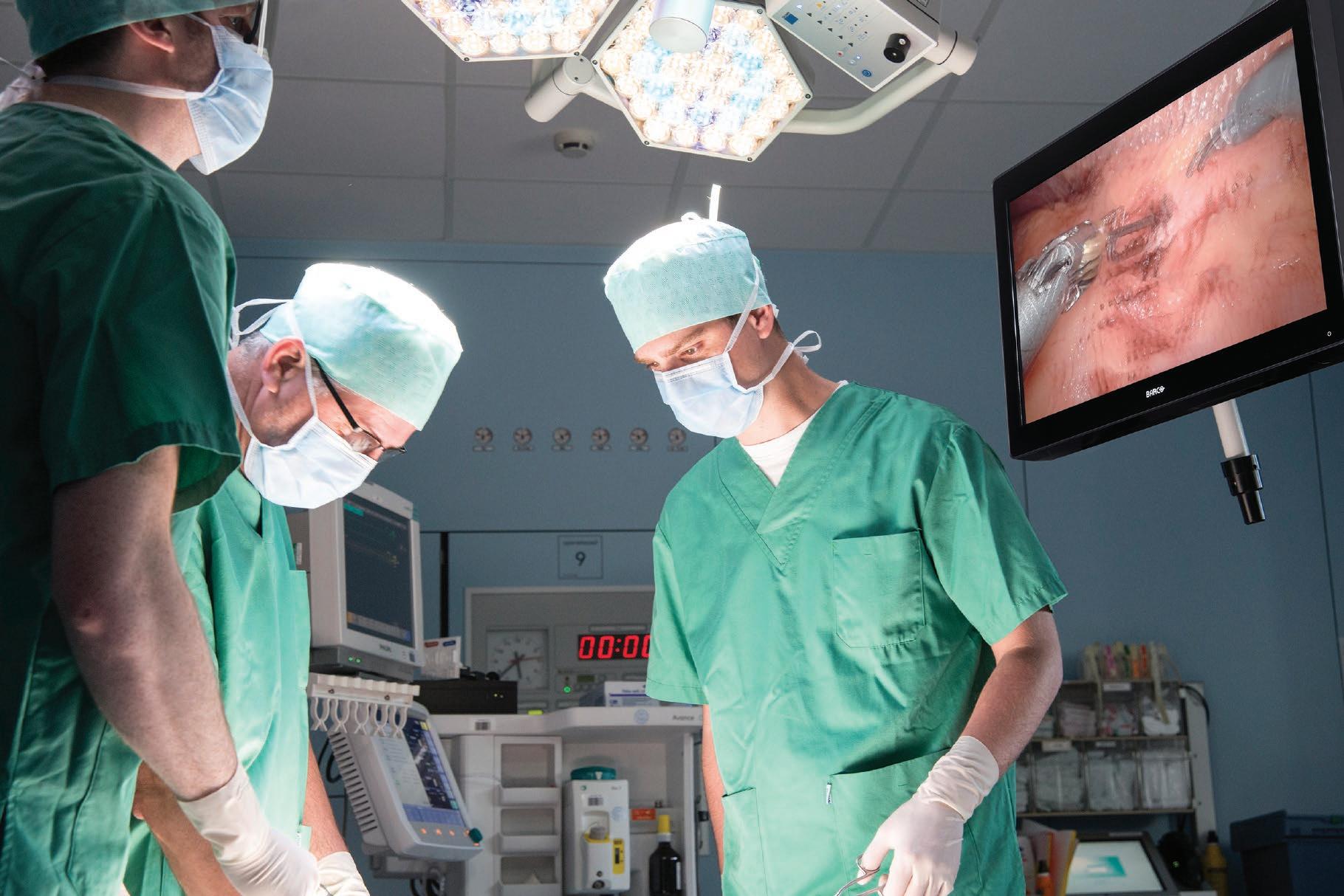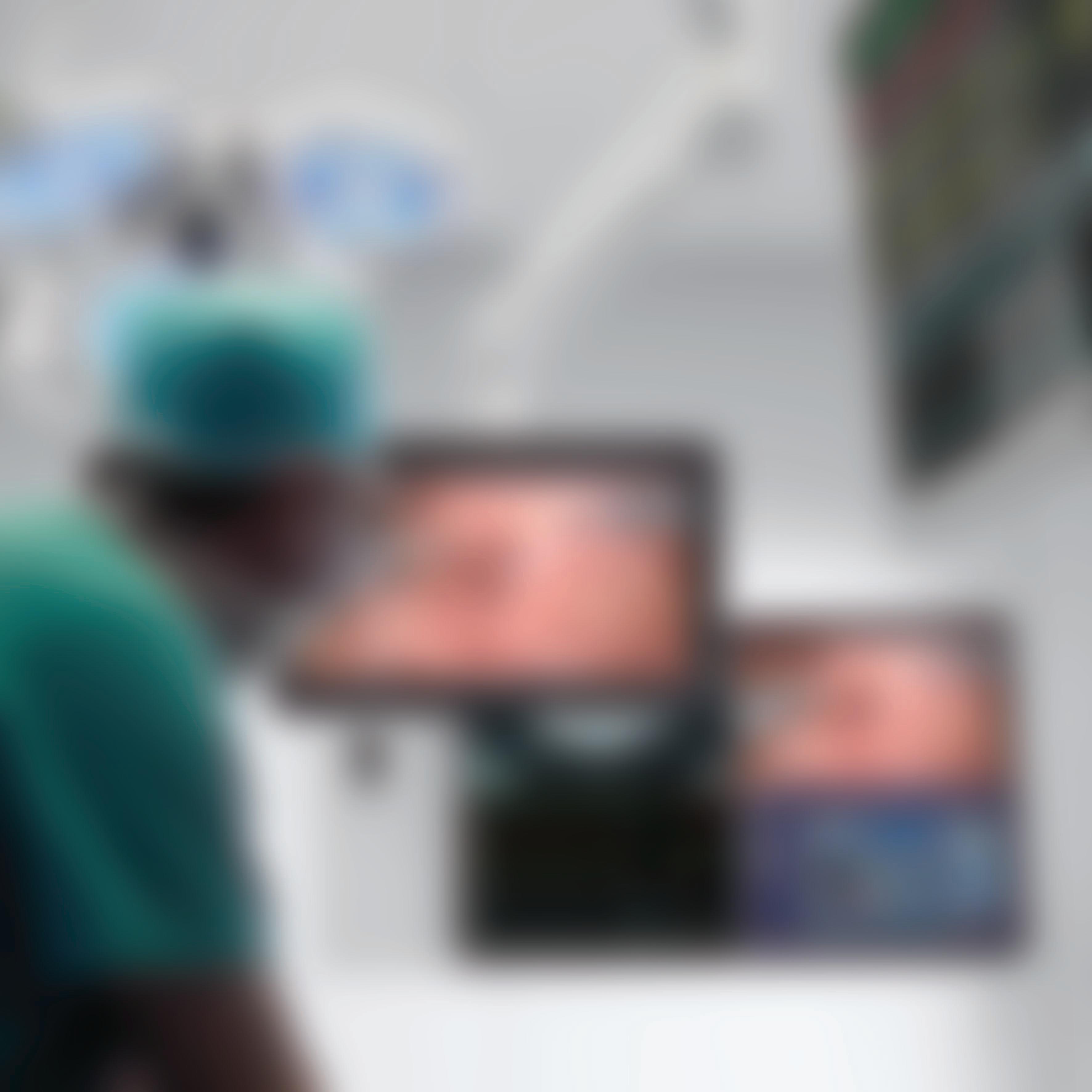
5 minute read
Minimally Invasive: Maximum Organisation
from Hospital Reports – Improving Operating Room Efficiency and the Role of Digital Technology – Barco
John Hancock, Editor
To ensure a smooth and efficient surgery process requires a manageable and well-managed operating theatre
Minimally invasive surgery (MIS) is gaining traction in the healthcare sector. British Journal of Family Medicine’s25 reported on Southend University Hospital’s ‘Colin George Laparoscopic Theatre’ where Mr Mike Dworkin, Consultant Surgeon said: “Many of these patients would have previously had to have ‘open’ surgery’ which would have meant longer hospital stays and recovery times, and greater post-operative pain and scarring. The great news for patients is we have now got faster set up times for surgery and quicker change over between cases and have the equipment to carry out on table colonoscopy, which will make cancer surgery more accurate.”
But, whereas with open surgery, the surgeon can see the work site in real life, with MIS they have to rely on pre-operative planning and images of the operation area. In the preceding articles we’ve looked at the operating theatre from a human and a technology point of view but all factors need to be managed and improved in order to ensure effectiveness in operating theatres and the work undertaken in them.
Efficiency is a very important topic at the top of every healthcare provider’s agenda these days but a more efficient process cannot be traded for quality. BMJ, ‘Improving theatre turnaround time’26 reported, “The NHS Institute for Innovation and Improvement has determined that a £7 million saving can be achieved per trust by improving theatre efficiency. The aim of this quality improvement project was to improve orthopaedic theatre turnaround without compromising the patient safety.”
As well as theatre efficiency, it is also possible to improve surgeon efficiency by adding to their armoury in the matter of pre-operative planning; a great asset in that has been the introduction of 3D imaging. As MirrorMe27 explains, “3D simulation also makes planning for surgery easier and more accurate. Being able to measure a patient’s soft tissue can help surgeons better understand both the problems they face and how to fix them… Surgeons are now able to better plan surgical procedures, more accurately achieve desired outcomes, and increase trust with their patients.”
That works well for planning but the actual procedure will be a more dynamic affair in which the surgeon might well need access to real time images, known as intraoperative images. Science Direct28 explains, “Although diagnostic imaging systems designed for use in diagnosis and treatment planning are often used intraoperatively, the requirements for intraoperative imaging are rather different. Whereas the main requirement for most diagnostic systems is image quality, the overriding requirement for intraoperative imaging is timeliness. Although quality is still important, a perfect image obtained some hours (or even several minutes) after it is taken is not so useful in an operating room setting. Generally, one needs the images to provide sufficient information for positioning an instrument relative to target anatomy or monitoring an interventional process within acceptable latencies that may range from fractions of seconds to a few minutes, depending on the particular task.”
What will most interest patients is how well the operation deals with their needs. The greater precision with which a surgeon can work, the more effective will be the outcome. MedStar Franklin Square Medical Center29 confirms the efficacy of minimally invasive surgery (MIS), “Minimally invasive surgery also offers a higher accuracy rate compared to traditional open surgery. Accuracy is improved because procedures use a camera, allowing the surgeon to have a better visualization of your internal organs.” Among the issues related to minimally invasive surgery cited by The Hamlyn Centre for Robotic Surgery, Imperial College London30 include, “… the limited field of view; reduced manoeuvrability of the tools; lack of haptic feedback; loss of depth
perception…” but the paper continues to address how those issues are being overcome with the latest technologies. Technology is definitely the key to optimal precision in MIS whether robot assisted or non-robotic.
The Challenges of Set-Up and Workflow in an Operating Theatre
Operating theatres need to be wholly sterile places, whether the preparation and preoperative areas, sterile storage, the anaesthesia and equipment storerooms or the entrances and the exits and especially the operation area and the sterile preparation area. All of this gives rise to a number of challenges for those whose responsibility is the maintenance and setting-up of theatres. This side of running and preparing a theatre is a manual task so anything that simplifies the infrastructure of the facility will not only help to improve the job of those who do the setting up but will also reduce the time needed for setting up, which can have significant financial value – see the BMJ reference at the start of this article.
Also, workflows are very important factors in the efficient and timely running of an operating theatre. BMC31 explains, “The design and internal layout of modern operating rooms (OR) are influencing the surgical team’s collaboration and communication, ergonomics, as well as intraoperative hygiene substantially.” In these days of ever tighter budgets and greater demands, the exploration of ways to improve “how theatre resources and clinical expertise can be best used” is always under way, according to NHS Improvement32. In a similar vein, Annual Symposium Proceedings Archive on NCBI33 clarifies, “Surgeons and other proceduralists are very highly trained professionals; the technology and resources they employ are typically advanced, expensive, and scarce. Optimization of these limited resources is paramount to the safe, effective, and efficient delivery of healthcare.” A great asset in the drive to improve workflow is the arrival of the control room as part of the integrated solution.
Looking Ahead
The technology behind minimally invasive surgery has advance in leaps and bounds in recent years with no sign of let-up. HP in ‘The future of surgery: how technology is transforming the operating room’ suggests that, “In the not-toodistant future, surgeons could use augmented reality to bring multiple streams of information together for surgeons via hologram.” Well that’s in the future but already, today, surgeons have available to them an array of high-quality tools to ensure that their interventions are well-informed and well-managed. The design and internal layout of modern operating rooms (OR) are influencing the surgical team’s collaboration and communication, ergonomics, as well as intraoperative hygiene substantially






